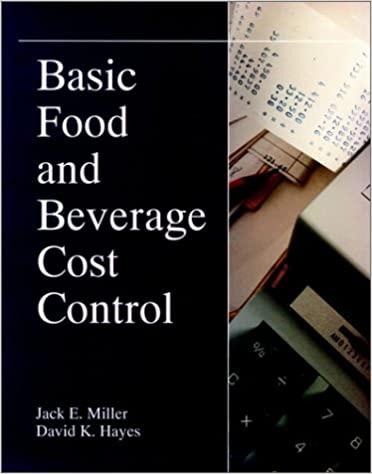Question
Budget Project instructions | help Question 1 (of 1) Save & ExitSubmit 1. value: 50.00 points Case 9-29 Master Budget with Supporting Schedules [LO9-2, LO9-4,
| Budget Project | instructions | help |
Question 1 (of 1) Save & ExitSubmit
1.
value: 50.00 points
Case 9-29 Master Budget with Supporting Schedules [LO9-2, LO9-4, LO9-8, LO9-9, LO9-10]
| You have just been hired as a management trainee by Cravat Sales Company, a nationwide distributor of a designers silk ties. The company has an exclusive franchise on the distribution of the ties, and sales have grown so rapidly over the last few years that it has become necessary to add new members to the management team. You have been given responsibility for all planning and budgeting. Your first assignment is to prepare a master budget for the next three months, starting April 1. You are anxious to make a favorable impression on the president and have assembled the information below. |
| The company desires a minimum ending cash balance each month of $10,000. The ties are sold to retailers for $8 each. Recent and forecasted sales in units are as follows: |
| January (actual) | 22,000 | June | 67,000 |
| February (actual) | 33,000 | July | 46,000 |
| March (actual) | 37,000 | August | 37,000 |
| April | 41,000 | September | 34,000 |
| May | 51,000 | ||
| The large buildup in sales before and during June is due to Fathers Day. Ending inventories are supposed to equal 90% of the next months sales in units. The ties cost the company $5 each. |
| Purchases are paid for as follows: 50% in the month of purchase and the remaining 50% in the following month. All sales are on credit, with no discount, and payable within 15 days. The company has found, however, that only 25% of a months sales are collected by month-end. An additional 50% is collected in the following month, and the remaining 25% is collected in the second month following sale. Bad debts have been negligible. |
| The companys monthly selling and administrative expenses are given below: |
| Variable: | |||
| Sales commissions | $ 1 | per tie | |
| Fixed: | |||
| Wages and salaries | $ | 23,500 | |
| Utilities | $ | 15,300 | |
| Insurance | $ | 1,200 | |
| Depreciation | $ | 1,500 | |
| Miscellaneous | $ | 3,100 | |
| All selling and administrative expenses are paid during the month, in cash, with the exception of depreciation and insurance expired. Land will be purchased during May for $26,000 cash. The company declares dividends of $9,000 each quarter, payable in the first month of the following quarter. The companys balance sheet at March 31 is given below: |
| Assets | ||
| Cash | $ | 19,000 |
| Accounts receivable ($66,000 February sales; $222,000 March sales) | 288,000 | |
| Inventory (36,900 units) | 184,500 | |
| Prepaid insurance | 14,400 | |
| Fixed assets, net of depreciation | 82,500 | |
| Total assets | $ | 588,400 |
| Liabilities and Stockholders Equity | ||
| Accounts payable | $ | 101,500 |
| Dividends payable | 9,000 | |
| Capital stock | 300,000 | |
| Retained earnings | 177,900 | |
| Total liabilities and stockholders equity | $ | 588,400 |
| The company has an agreement with a bank that allows it to borrow in increments of $1,000 at the beginning of each month, up to a total loan balance of $90,000. The interest rate on these loans is 1% per month, and for simplicity, we will assume that interest is not compounded. At the end of the quarter, the company would pay the bank all of the accumulated interest on the loan and as much of the loan as possible (in increments of $1,000), while still retaining at least $10,000 in cash. |
| Required: | |
| 1. | Prepare a master budget for the three-month period ending June 30. Include the following detailed budgets: |
| a. | A sales budget by month and in total. |
| b. | A schedule of expected cash collections from sales, by month and in total. |
| c. | A merchandise purchases budget in units and in dollars. Show the budget by month and in total. |
| d. | A schedule of expected cash disbursements for merchandise purchases, by month and in total. |
| 2. | A cash budget. Show the budget by month and in total. (Cash deficiency, repayments and interest should be indicated by a minus sign.) |
| 3. | A budgeted income statement for the three-month period ending June 30. Use the contribution approach. |
| 4. | A budgeted balance sheet as of June 30. |
Step by Step Solution
There are 3 Steps involved in it
Step: 1

Get Instant Access to Expert-Tailored Solutions
See step-by-step solutions with expert insights and AI powered tools for academic success
Step: 2

Step: 3

Ace Your Homework with AI
Get the answers you need in no time with our AI-driven, step-by-step assistance
Get Started


